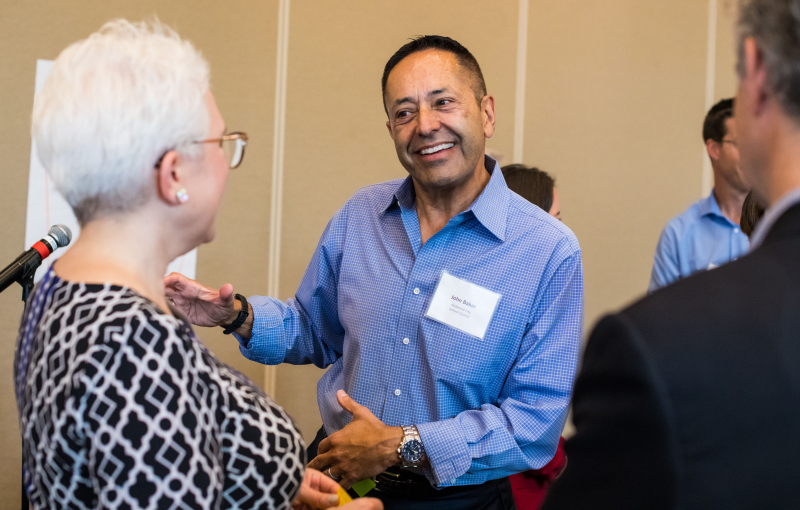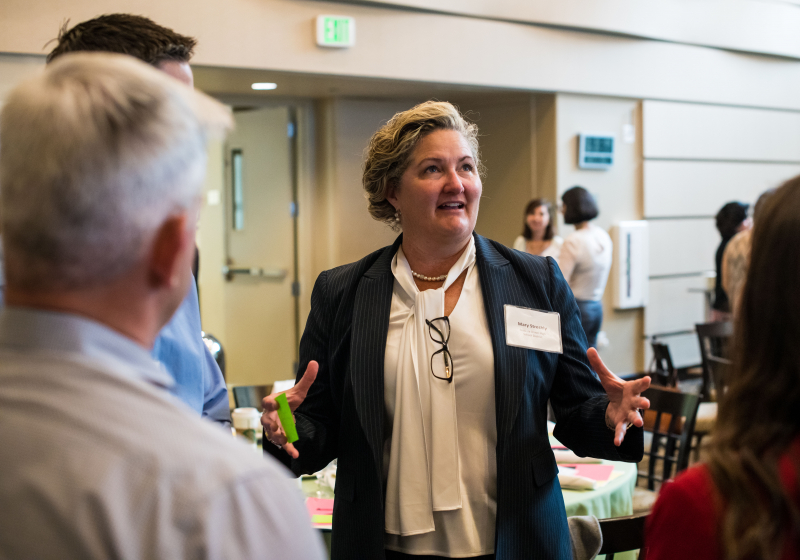The vulnerability of sharing data
For the superintendents—most of whom have collaborated with one another but not in a sustained, systemic way—the experience of participating in the collaborative goes beyond coalescing around best practices.
“There’s real potential here to develop more of a system across these nine districts, to knit us together a little more neatly,” said Milliken. The work could redirect and strengthen the districts, he added, “so that we’re not just coordinating and working together better, but that we’re collectively more capable.”
In an era of increasing accountability, Gerstein noted, it takes courage for school administrators to share their data.
“It’s a very public process,” she said. “The districts took risks putting their findings out there for the whole collaborative to see.” (Data are shared in the aggregate, Gerstein said, to protect student confidentiality.)
Districts drive the research agenda
The research questions are driven by district priorities. The theme of supporting English learners emerged over the past two years during a set of convenings led by staff at California Education Partners, a nonprofit established by the Silver Giving Foundation to promote collaboration among school systems throughout the state.
California Education Partners coordinates both the Stanford-Sequoia Collaborative and the Stanford-SFUSD Partnership.
“A key piece of the research-practice partnership is the act of creating and working on the research projects together,” said Michelle Nayfack, associate director of research-practice partnerships at California Education Partners. “The districts want to make research-driven decisions, but they often need research support that feels closely connected to their specific problems of practice.”
The collaboration has been a learning experience for both school personnel and researchers, said Solano-Flores.
“I’ve always worked with schools and teachers, but never in the context of a partnership, which has a higher level of formality, commitment and coordination,” he said. “We have to understand their needs, what they want to know, what challenges they’re facing—and they need to also understand the kinds of things we [researchers] are able or not able to do in a relatively short time.”


